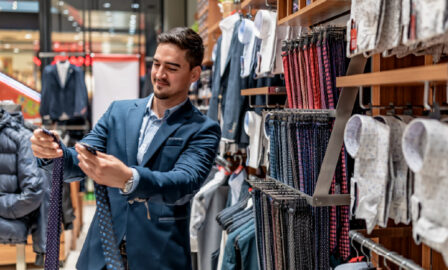Small Format Stores and the Need to Innovate in Retail
Retailers are experimenting with small format stores to fight the decrease in foot traffic and revenue in large department stores. Due to the growth of eCommerce and decline of traditional shopping malls, retailers have found creative ways to provide additional value to shoppers.
Accelerated by the pandemic, online shopping in 2022 is projected to hit a trillion dollars. As such, innovation with many aspects of a consumer’s shopping experience is likely to be a focus area for many retailers in the coming year. Below, we outline a few considerations for retailers when thinking about small format stores and the need to innovate in retail.
Untapped Markets
Smaller markets have typically not been viable for large-footprint locations and as a result have been overlooked by major retailers. In response, retailers like Kohl’s are experimenting with stores that are approximately half their typical size of 80,000 square feet. This will allow them to capture more shoppers while simultaneously cutting costs on overhead. They plan to open 100 of these smaller stores in previously untapped areas.
These stores will also test advancements for experiential retail. Aside from aesthetic updates, Kohl’s is providing offerings like easy pick-up and drop off for returns or online purchases. This is significant because it integrates the shopper experience across brick-and-mortar and digital channels. Shoppers have an incentive to enter stores for faster pick-up or easier returns and retailers may be able to capture additional spending. A recent report finds that 71% of consumers spend over $50 when shopping in-person versus 54% of consumers that shop online. Additionally, 78% of men and 89% of women add additional items to their cart in-person compared to a lower 67% of men and 77% of women when shopping online.
Other innovative offerings include partnerships with companies like Sephora and Amazon inside stores. Shoppers are incentivized to enter the store in search of these brands, and both may see extra revenue from unplanned purchases. Retailers are also using consumer information to predict what products shoppers will respond best to in a particular market. For example, a smaller Kohl’s in Seattle may be stocked with more camping equipment than one in San Diego. This allows less inventory to sit dormant and helps individual stores get ahead of supply chain issues.
Perhaps most importantly, small format stores that offer experiential value may be more likely to thrive in the next generation of retail as shopping malls continue to decline. This may be the needed lifeline for retailers with $52 billion in missed rent.
Power Centers
Kohl’s is not alone in its push for smaller, more experiential stores. Market by Macy’s and Nordstrom Local see store sizes cut down to as little as a fifth of their typical department store square footage. All three of these retailers are planting stores in open-air retail centers called ‘Power Centers’ that offer mixed-use residential, grocery, and retail offerings.
Market by Macy’s has found that their smaller stores are easier to staff, easier to stock, and have revenue that exceeded expectations. This comes amidst mass mall location closures. It’s important to recognize that shoppers still want physical retail locations for pick-ups, returns, and to see products up close, but shopping malls are no longer the answer. Instead, mixed-use shopping areas and pop-up shops that are closer to home and offer a superior shopping experience are quickly gaining the spotlight.
A Note on Consumers
Consumers have undergone a radical transformation in shopping behavior post-pandemic. Consumers who shop at least once per month are shopping in-person for over half of their needs. This means that the rise of brick-and-mortar stores which are localized may be more successful as shoppers return to in-person retail locations.
Shoppers do report fewer trips out, which makes planting stores in mixed-use areas more important. One report shows that 86% of grocery shopping occurs in-person, and this means that being located near grocers may drive foot traffic for nearby retailers. Finally, 37% of online shoppers affirmed that they still pick-up orders in store. This is key for smaller retail locations that offer partnerships with delivery services like Amazon, FedEx, the USPS, or UPS.
Looking Forward
Brick-and-mortar retailers can recapture shopper dollars by providing new solutions to a changing retail environment. Online retailers may have previously held the monopoly on personalization, but rapidly evolving stores can bring the same offerings. These “stores of the future” may include concepts like AI predicting which products a shopper wants as they browse, in-store micro-fulfilment for personalized orders, clienteling, and same-day delivery – all efforts by physical retailers to create a more personalized experience for their customers.
Small format stores like those already being implemented by Kohl’s, Macy’s, and Nordstrom allow retailers to experiment with these new technologies, experiences, and locations. This innovation is necessary for retailers to adapt to the present and future in a fast-paced industry.
Subscribe to Clarkston's Insights
Contributions by Jake Park-Walters



